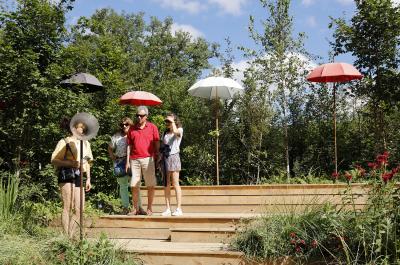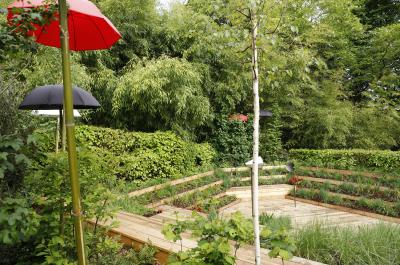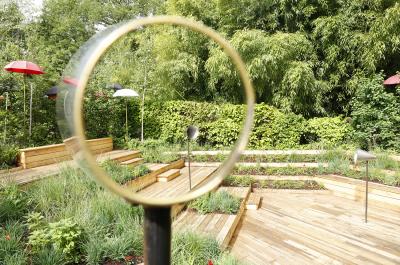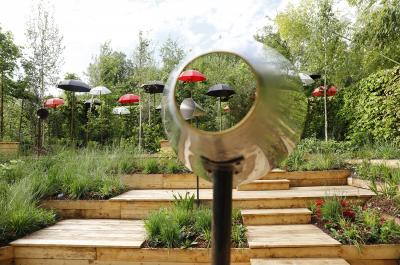09. l'agora
1967. Demonstration in Washington against the Vietnam war.
A pacifist libertarian struggle; its slogan, “Flower Power”.
Action against deprivation of liberty.
One weapon: flowers.
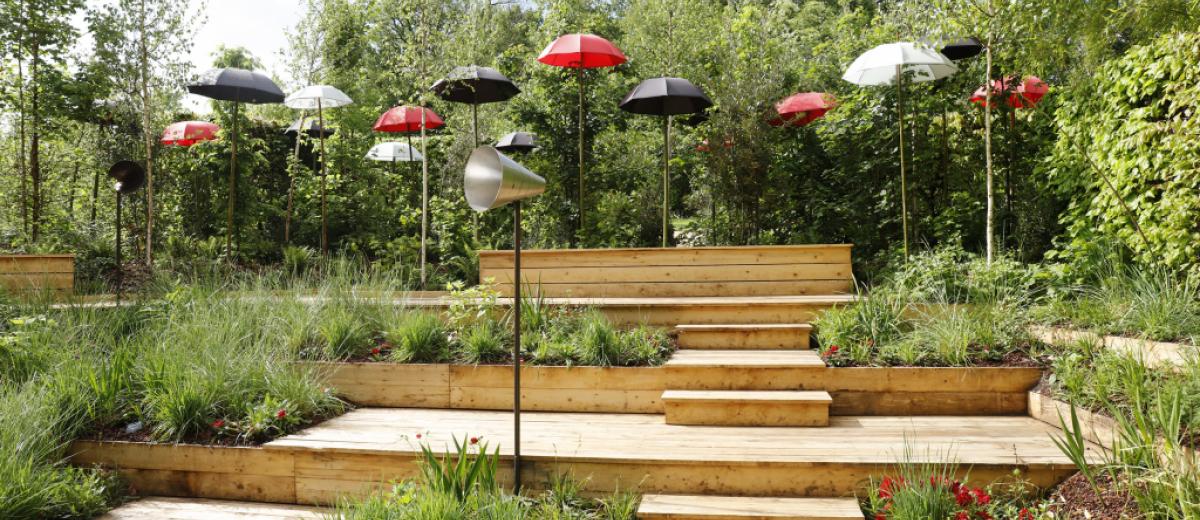
2017. Fifty years later.
Struggles in search of democracy; slogans chanted in public places.
Acts of occupation and appropriation.
One weapon: words.
Welcome visitors all, please come in. Come in and join this demonstration, where trees, shrubs and flowers stand alongside you to resist. A crowd gathered together, borne on our roots or our feet, beneath the shade of a canopy. A dense luxuriant mass, intense, standing tall, rallying together to resist. To stand firm against climate imbalance and the eradication of liberties, against wars and poverty. This hybrid collective, half plant half human, is united and ready to march forward.
Onwards then, into the amphitheatre, all of us seated on the same tiers to speak and debate. With our bulbs, with our hearts. Each of us free to settle back and appropriate our surroundings. Speak, shout, sing – for your companions or for the plants seated at your side. The debate is open, the agora resonates along with you.
And if you so wish, take to the stage. Say what you have to say, about everyday things or matters extraordinary. Leaves and demonstrators gesticulate together. Protect your right to communicate, your right to grow, in freedom!
Designers
Justine CREUGNY, scenographic architect, Clémence MAUTOUCHET, architect, and Clémence NOURY, urban architect
FRANCE
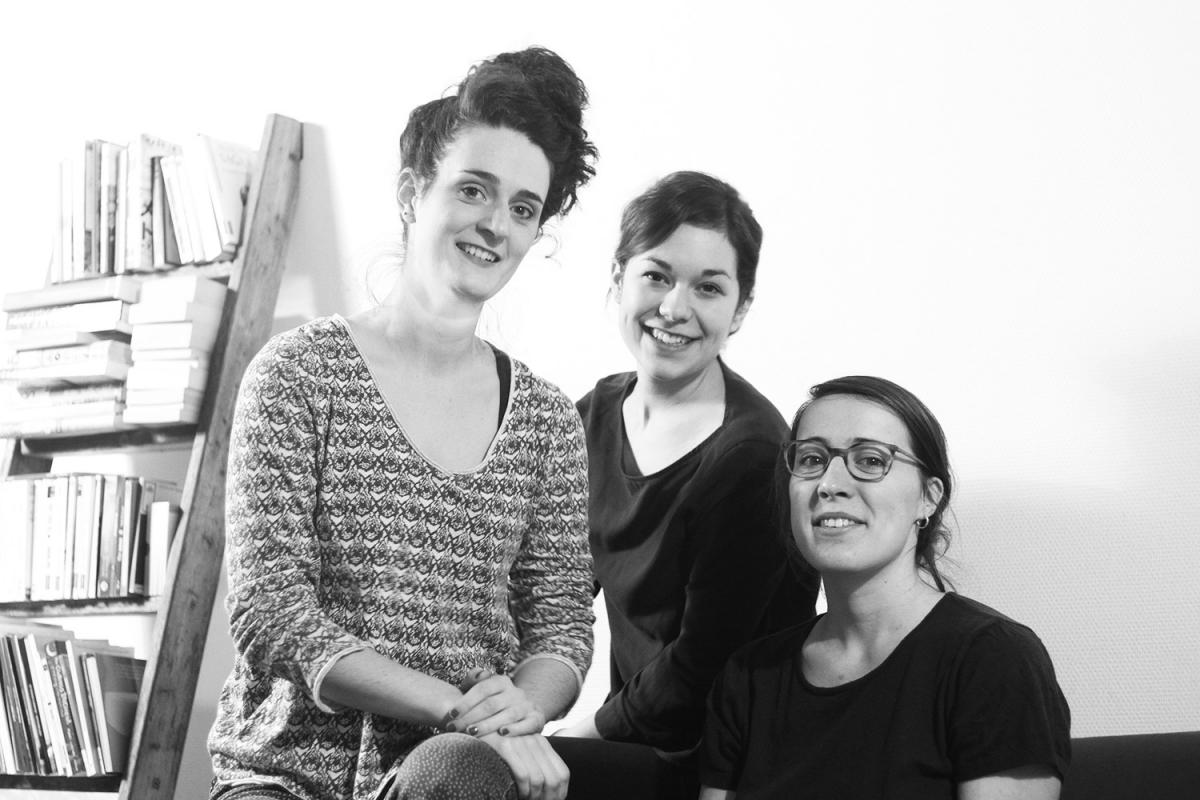
From left to right: Justine Creugny, Clémence Mautouchet and Clémence Noury
Clémence, Justine and Clémence first met when they were students at the National Higher School of Architecture in Nantes. At the crossroads of their three native regions, the Chaumont-sur-Loire International Garden Festival provided an opportunity to mount a shared project.
Justine Creugny is a scenographic architect. She graduated from the National Higher School of Architecture in Nantes in 2013 and continued her studies with a course on scenography, during which she added to her experience through a wide range of projects in theatre, opera, museums and cinema as well as technical design of auditoriums. Her early professional experience enabled her to keep up her multidisciplinarity, including museum installations, and assisting set-designers (Emmanuelle Roy and Antoine Vasseur) with the stage plays they were working on, and during filming of TV series. She has also collaborated with the Festival du Nouveau Théâtre Populaire (Fontaine-Guérin), working on layout of the public reception area, designing a stage and creating sets. With a strong affinity to art and live performance, she likes to vary projects, scales, tools and constraints. A native of the Centre-Loire Valley region, she might be said to have been brought up on the artistic proposals and reflections that the Chaumont-sur-Loire International Garden Festival has to offer.
Clémence Noury is an architect by training. Wanting to work on a variety of scales, from open landscapes to the finer details of implementation, she orientated her career path towards urban planning and landscaping. After studying architecture in Nantes, Paris Marne-la-Vallée and Geneva, she started out at Atelier Ruelle (an urban planning and landscaping agency in Paris), following her experience there with time at the a/LTA architectural and urban planning agency in Rennes. Her interest in the plant aspects of landscaping led her to enrol at École du Breuil (the City of Paris’ horticultural school), where she obtained an honours degree in 2016. In her projects as well as in her everyday life, she upholds the importance of providing generously laid-out public spaces open to everyone. Highly attuned to the living world, she believes in dialogue between architecture and landscape, and spends time imagining sites where the two “hybridise”.
Clémence Mautouchet is an urban architect. After studying applied arts, she turned to architecture and enrolled at the National Higher School of Architecture in Nantes. Her special interest in urban and landscaping projects led her to undertake specialised studies at Grenoble’s Urban Planning Institute, since then her main focus has been on finding new forms of association and collaboration in the changing urban landscape and cultural and social practices. Her career path has encompassed a wide range of professional experience, including in a research laboratory devoted to the urban fabric, a public spatial-planning institution and an architectural, urban-planning and landscaping agency. These days, she works with a body specialising in urban social development, collaborating on territorial renewal in Île-de-France. Very much aware of humankind’s relationship with its living environment, she gives a great deal of thought to construction of more socially and ecologically balanced territories.

